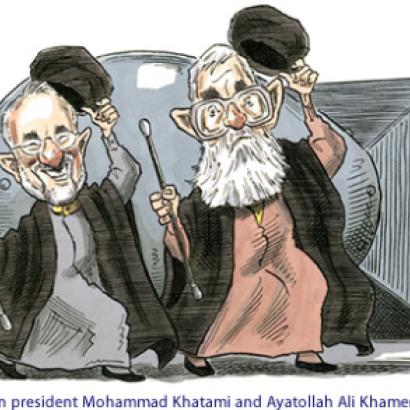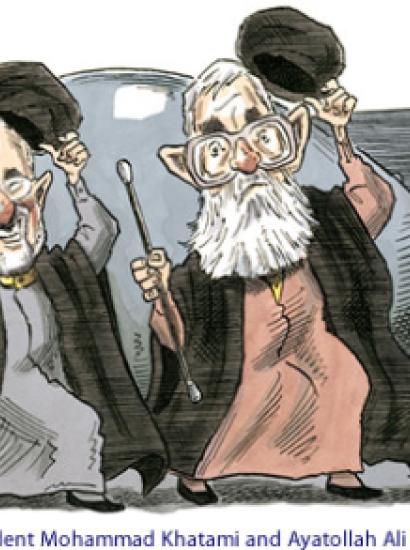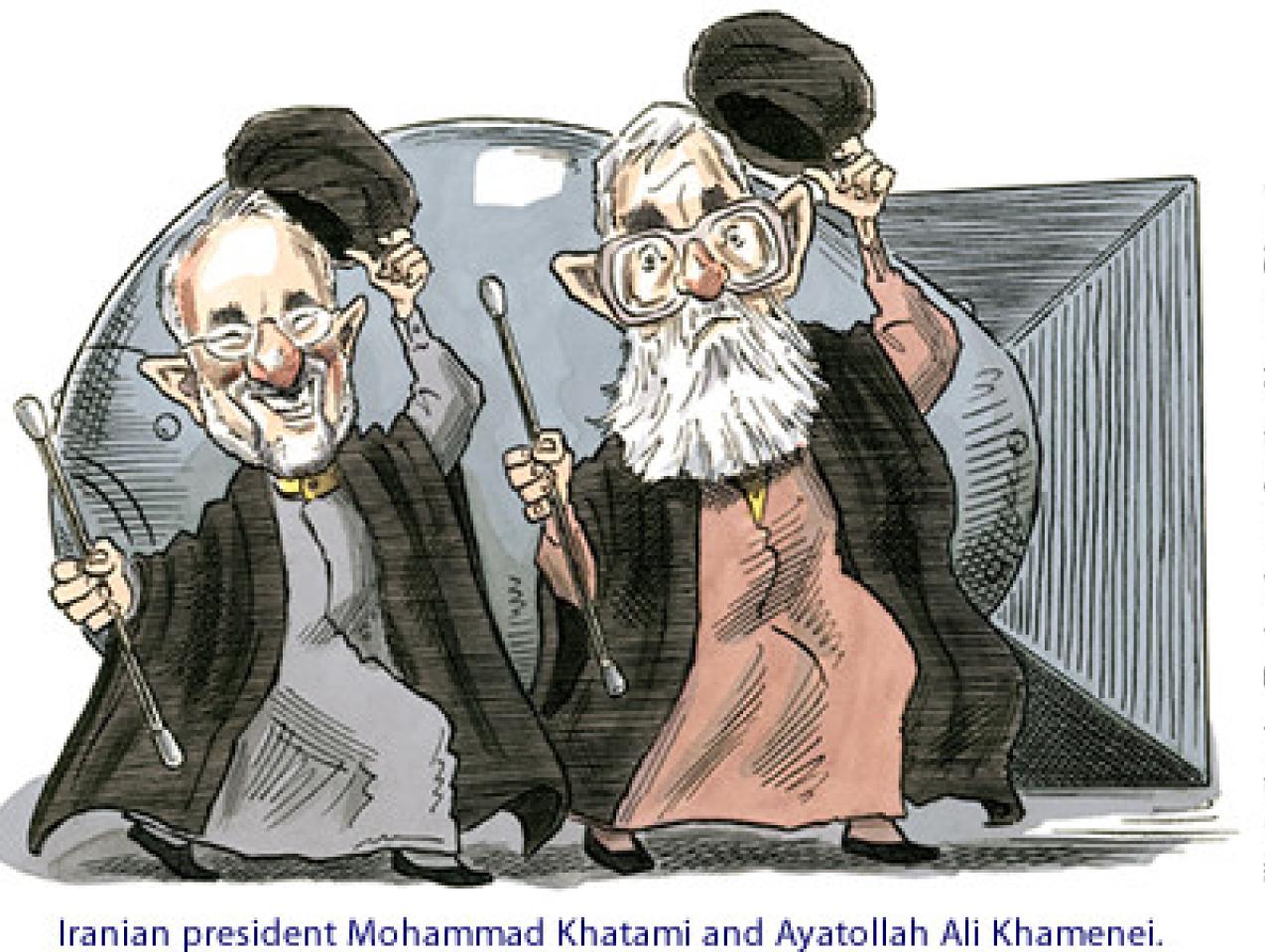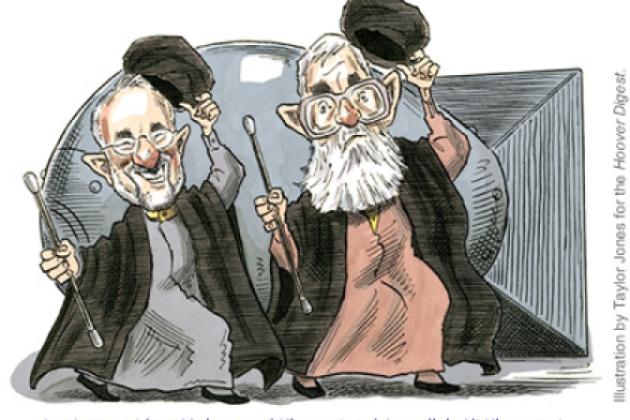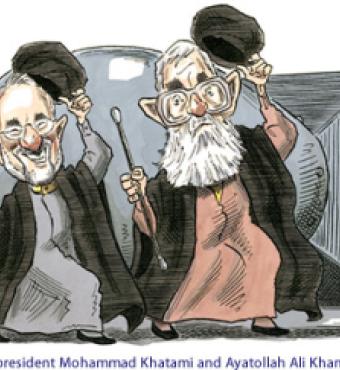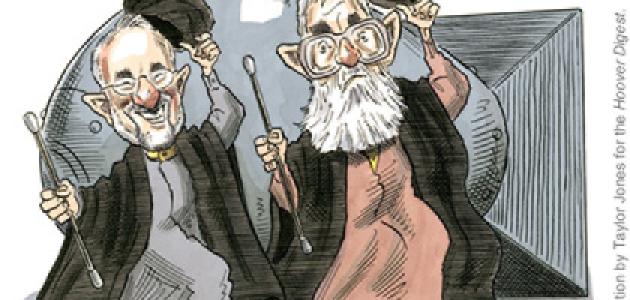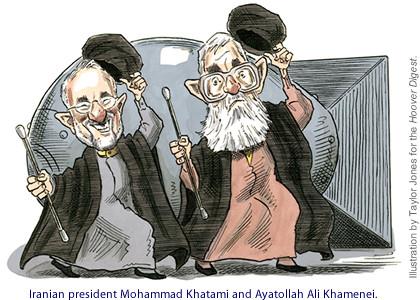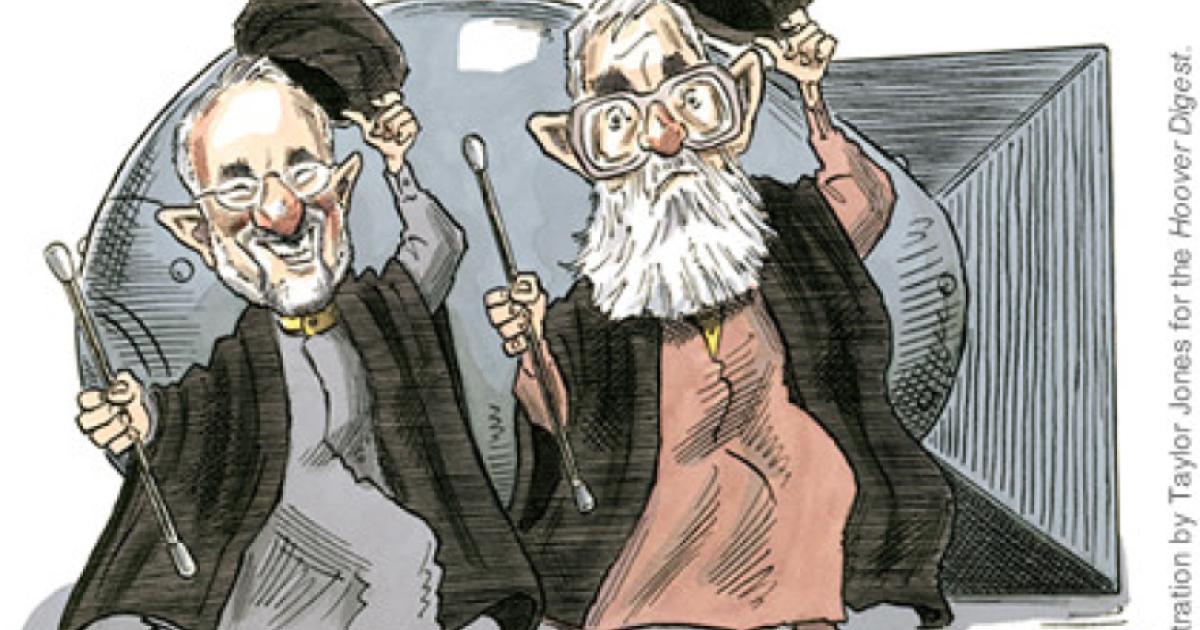- International Affairs
- US Foreign Policy
Tehran is getting what it wants in the showdown over its suspected nuclear weapons development efforts—but the United States may have to work hard to keep Tehran honest before we can say the same.
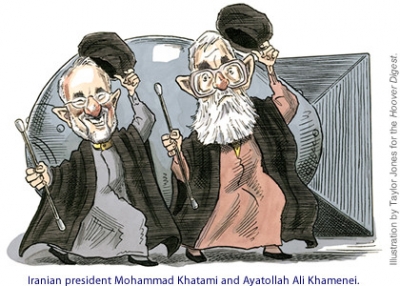
By professing to value good international relations more than becoming a nuclear power, and by allowing more-intrusive inspections as a sign of its good faith, Tehran has successfully defused tensions that could have sent the weapons crisis to the United Nations Security Council and possibly led to punitive sanctions. At the same time, Iran’s show of cooperation ensures that it will maintain its good trading relations with the European states and Japan—something its weak economy needs.
To obtain all that, the Iranian government late last year not only reversed its original rejection of the International Atomic Energy Agency’s demands to answer questions about its nuclear activities but also agreed to suspend for an undefined “interim” period the single activity that most alarmed everybody: the enrichment of uranium at what until recently were completely clandestine facilities. The IAEA’s own evidence suggests that the secret work included using foreign-supplied technology to enrich samples of uranium to a 20 percent level, well beyond the 2 to 3 percent needed for reactor fuel. If Iran has adequate supplies of uranium, that would be enough to produce a cumbersome nuclear device—cumbersome because the result would likely weigh close to one metric ton and be difficult to deploy. Altogether, that is noteworthy progress toward achieving the 90 percent enrichment level needed to produce the lightweight, missile-deployable bombs that constitute a modern nuclear force.
But Iran’s concessions, for all the drama of a wished-for turnaround, still fall well short of ending our problem of nuclear proliferation. Instead, they now move matters into the familiar territory of the Iraq weapons-of-mass-destruction crisis. That crisis, of course, saw an equally unpredictable Iraq lock horns with international arms inspectors for 12 years in such a confusing, protracted, and ultimately divisive struggle that Washington and London considered occupying the country to be an easier solution. For Iran, which by many estimates was on track to produce a bomb in 7 to 10 years unless obstructed, this is favorable terrain should its real purpose be simply to buy time.
Thus the United States cannot be satisfied solely with what is happening at the IAEA. To ensure that Iran really is forced to give up its nuclear ambitions, we are going to have to keep pressure on Tehran both inside and outside the U.N. arms-control process. And that pressure should aim both at raising the cost for Tehran of any attempt to secretly maintain a weapons program and at cutting off the flow of foreign dual-use technology that makes such programs possible.
For starters, we must see that Iran gives up its uranium enrichment program permanently, not merely for an interim period as it has pledged. And we must insist within the IAEA and through our allies that have influence in Tehran that Iran also drop its nascent program to mine its own natural uranium ore. Iran says that both these activities are aimed only at giving it a domestic capability to produce nuclear fuel and are part of its plan to generate more electricity by building seven light-water reactors by 2020. But allowing Iran to manufacture its own fuel would greatly complicate the task for arms inspectors trying to ensure that none of the uranium is diverted to clandestine bomb-making efforts. Instead, Iran’s nuclear energy program should be strictly limited to using imported fuel—an arrangement that is less expensive for Iran and certainly easier to keep tabs on.
Equally, we must see that Iran permanently gives up its efforts to produce plutonium—an alternate track to producing nuclear bombs. Tehran recently admitted to previously separating a likely miniscule amount of plutonium in covert experiments between 1988 and 1992. But far more troubling, Iran has also been discovered to be clandestinely constructing a plant to distill heavy water, the key ingredient for reactors capable of “breeding” plutonium directly from natural uranium. Iran has made no commitments to the IAEA to suspend its plutonium program, which it says is only to produce radioisotopes for medical and industrial uses. Instead, Tehran has publicly declared plans to start building its first “breeder” reactor next year.
Our best levers for ensuring that Iran fully drops its uranium and plutonium production projects may be our European allies and Japan, all of which are beginning to share our alarm that any Iranian success in acquiring nuclear weapons could set off a race among other states to do the same, including Turkey, Egypt, Algeria, and South Korea. Washington should try to expand on the Europeans’ recent success in using threats to “review” ties with Iran and persuade it to accede to the IAEA’s demands. We should congratulate Britain, France, and Germany on their diplomacy and thank them for, at least, backing the recent IAEA resolution that “strongly deplores” Iran’s past secrecy and implicitly threatens to refer any “further serious failures” to the U.N. Security Council (something the United States had urged doing immediately). But we now also must encourage our allies—who hope to persuade Iran to permanently abandon uranium enrichment and plutonium production in exchange for greater access to Western nuclear technology—to toughen the terms. Our allies must also make it clear to Tehran that any resumption of such dual-use activities will unequivocally mean the end of business relations.
Similarly, Washington should find ways to persuade Russia—a main source of nuclear expertise for Iran—to link its assistance in building Iran’s first commercial reactor in Bushehr to Tehran’s renouncing its uranium and plutonium programs. Until now, Washington has sought to convince Moscow not to provide fuel for the plant once it opens (probably in 2005) or even to abandon its lucrative Bushehr contract altogether out of our concern that the Russian-supplied fuel could be yet another source of uranium that Iran might secretly divert for weapons making. But in the face of Moscow’s refusal to give up its Iran business, which represents important income for Russia’s own struggling and politically influential nuclear sector, Washington may have to take a different approach. Some nonproliferation experts have proposed that the United States accept Russia’s fulfilling its Bushehr contract if Moscow will tie its doing so to an Iranian commitment to dismantle the facilities it is constructing to produce highly enriched fissile materials. In exchange for Moscow’s help, the United States could offer to clear the way for greater Russian nuclear commerce with the West, including storing spent U.S.-origin fuel from reactors in countries such as South Korea and Taiwan.
Beyond working with our European allies and Russia, we also need a more effective way of dealing with Pakistan, now widely suspected of being the source for much of Iran’s key uranium enrichment technology. Our suspicions have grown as IAEA inspectors reportedly have found that the design of Iran’s gas centrifuges for enriching uranium is very similar to a design widely believed to have been purloined from the Netherlands by a Pakistani scientist in the mid-1970s to help Pakistan catch up in its nuclear race with India. What is not clear is whether that design reached Tehran through official or unofficial channels. Pakistani president Pervez Musharraf has assured the United States that his government is not aiding Iran, but Washington may have to exert pressure to ensure that this official policy is also observed by any government-affiliated institutions or scientists pursuing interests of their own. Any “private” proliferators must be identified and their activities monitored or restricted by Islamabad as a condition for Pakistan’s continuing to reap the benefits of its partnership with Washington in the war on terror.
Finally, North Korea—a declared nuclear power hostile to America—will also require continued close attention to see that it is not providing weapons know-how to Tehran. North Korean scientists and engineers have reportedly been spotted at Iranian missile and nuclear-related sites, and Tehran has built a resort for them on the Caspian Sea. Beyond that, little is known about their activities, but we need to know more.
As we work to rein-in Iran’s nuclear ambitions, one more point is worth considering: Despite occasional suggestions in Washington that the fastest way to set back Iran’s progress is through air strikes, this is a crisis where only diplomatic solutions apply.
Some commentators and analysts have suggested that the United States destroy Iran’s nuclear program the same way that Israel preemptively destroyed Iraq’s Osirak nuclear reactor in 1981. However, that oversimplifies the problem. Iran does indeed have a big, highly visible nuclear target in the reactor being built at Bushehr. But Bushehr is open to international arms inspectors, and as long as they remain in the country, they should be able to stop any efforts to divert its fuel or use the plant to produce weapons-grade plutonium. Our real worries about Iran’s nuclear program, unfortunately, do not center on such a sitting duck as Bushehr but on the already-discovered secret sites and on our suspicions that others may support or duplicate them. For military planners, the task is not to simply destroy Iran’s weapons facilities but first of all to find them.
Our goal now should be to take the diplomatic steps that leave Iran with what it officially says it wants, a peaceful nuclear energy program. But if Iran refuses to stick to a purely energy-only program, those steps will set the stage for what must follow: mustering stricter international measures against Iran such as sanctions and, only as a last and always highly uncertain resort, efforts to root out its weapons programs by force.








